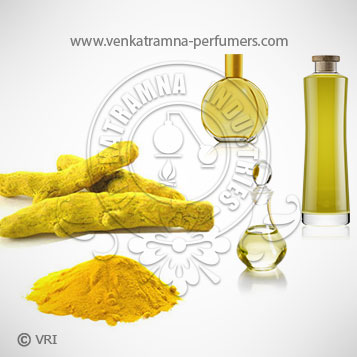
| Botanical Name | Curcuma Longa L |
| Common Name | Indian Saffron. |
| Country of Origin | India |
| Solubility | Soluble in alcohol and oils. Insoluble in water |
| Specific Gravity | 0.925 – 0.935 @ 20°C |
| Optical Rotation | (-24) – (-27) @ 20°C |
| Refrective Index | 1.500 – 1.650 @ 20°C |
| PlantPart | Dry Root |
| Bland With | Turmeric and curry powders. |
| CAS No | 8024-37-1 |
| Flash Point | 60 °C |
| Extraction Method | Extraction |
Water dispersible Curcumin (18%) is a solvent extract of turmeric rhizome. Apart from colorant it is an antioxidant and has typical turmeric like odour. It is also called Indian Saffron and has been used in Indian cooking for centuries. Processed from dried root part of the plant, which is grounded for extraction with the help of solvent, it is offered by us in water dispersible form.
Turmeric(Curcuma longa)was probably cultivated at first as a dye, and then became valued as a condiment as well as for cosmetic purposes. It is often used in cooking as a substitute for the more costly saffron. In the 13th century Marco Polo wrote of this spice, marvelling at a vegetable which exhibited qualities so similar to saffron. Familiar to the contemporary world as a prime component of curry powder, the orange-yellow rhizome's striking colour lent it a special aura in ancient India. It has always been considered an auspicious material in the sub-continent, both amongst the Aryan cultures (mostly northern) and the Dravidian cultures (mostly southern) and its value may extend far in history to the beliefs of ancient indigenous peoples. Turmeric's common name in the north, haldi, derives from the Sanskrit haridra, and in the south it is called manjal, a word that is frequently used in ancient Tamil literature. Turmeric has a long history of medicinal use in South Asia, cited in Sanskrit medical treatises and widely used in Ayurvedic and Unani systems. Susruta's Ayurvedic Compendium, dating to 250 BC, recommends an ointment containing turmeric to relieve the effects of poisoned food.
Color : Pale yellow to reddish-brown oily liquid with Characteristic warm, spicy turmeric odor.,
Aroma : Characteristic Curcumin odor
Curcumin (yellow pigment) essential oil (artumerone, zingberene, borneol), alkaloids, valepotriates and protein.
It is used in the beverages, sauces and confectionery industry. Further, it is also a very important herb in Indian Ayurvedic medicine. A symbol of prosperity, Turmeric has also been used for centuries in Indian traditional system of medicine as well as a spice and a natural food colour. Its anti-inflammatory and anti-oxidant properties also make it widely used in cosmetics, pharmacy, food supplements and as natural colors.